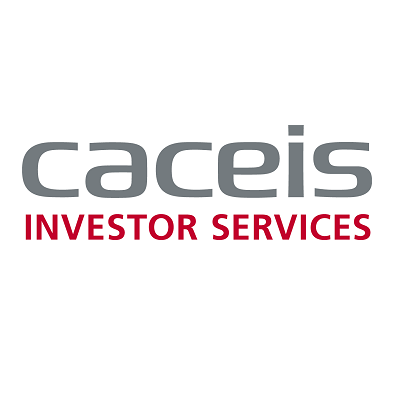European long-term investment funds (ELTIFs) were designed to help direct savings towards the ‘real’ economy. However, uptake still remains low six years after their creation. European authorities are now looking to boost ELTIFs’ appeal.
The ELTIF was created by an EU regulation (2015/760) in December 2015. It was designed to provide long-term financing for infrastructure projects, and listed or unlisted SMEs that issue equity or debt instruments, and could be sold to professional and retail investors on a cross-border basis.
According to ESMA figures, by the end of 2021, only 57 ELTIFs had been set up in the EU, accounting for a total around €2.4 billion in assets. Most were domiciled in four member states – France, Italy, Spain and Luxembourg – and were almost exclusively targeted at professional investors. The main reason for low number is the significant limitations in terms of distribution, and the strict rules governing portfolio composition.
Boosting the appeal of ELTIFs to attract more long-term investment to the ‘real’ economy is the challenge Brussels is facing. The solution is to modify the rules governing ELTIFs. The European Commission ran a public consultation between October 2020 and February 2021 to better understand industry opinion on ELTIF rules and expectations for the vehicle.
 In response, the Commission floated various ideas to relax restrictions in a proposal presented on 25th November 2021. These include removing both the minimum initial investment amount of €10,000 for retail investors, and the 10% maximum ELTIF investment threshold for financial portfolios below €500,000.
In response, the Commission floated various ideas to relax restrictions in a proposal presented on 25th November 2021. These include removing both the minimum initial investment amount of €10,000 for retail investors, and the 10% maximum ELTIF investment threshold for financial portfolios below €500,000.
“The aim is to eliminate the regulatory measures that have clearly limited retail investors’ access to this type of fund”, explains Eliane Méziani, Senior Advisor – Public Affairs at CACEIS.
Another proposed aspect of the reform is an easing of the rules on ELTIFs distributed only to professional investors. Eligible assets could include investments of at least €1 million in real assets, and certain investments in third countries. The ECB is also planning to raise the maximum capitalisation of listed companies in which these funds may invest from €500 million to €1 billion.
 On 25th May, the European Council adopted a position confirming the themes outlined above. This shows the important role that ELTIFs have in helping to finance small and medium sized enterprises (SME) as well as ecological and digital transition, and in developing the capital markets union (CMU). Negotiations with the European Parliament should quickly lead to agreement on a final version of the text.
On 25th May, the European Council adopted a position confirming the themes outlined above. This shows the important role that ELTIFs have in helping to finance small and medium sized enterprises (SME) as well as ecological and digital transition, and in developing the capital markets union (CMU). Negotiations with the European Parliament should quickly lead to agreement on a final version of the text.
“The planned new system should improve the flexibility of ELTIFs and make them more attractive”, says Valéry Théry, Group Product Manager. “At CACEIS, and more specifically within the PERES (Private Equity Real Estate Solutions) business line, we intend to monitor and be part of this promising overhaul of ELTIFs, some ten of which are already held in depositary at our bank”.
ELTIFs hold several advantages for clients:
- A fully harmonised European label allowing ELTIFs to be distributed across the EU, on the basis of a passport, to professional and retail investors. By comparison, alternative funds within the meaning of Directive 2011/61/EU on alternative investment fund managers (AIFMD) may only be marketed to professional investors, while the marketing of alternative funds to retail investors is subject to national rules.
- In some cases, the rules on ELTIFs may help them withstand market volatility, given that the funds are closed-ended and long-term. They may also offer preferential domestic taxation for ELTIF investors, depending on the national tax laws that apply.
- Furthermore, ELTIFs may be a safer option for investors interested in private equity, having a lower risk profile than pure private equity funds.
In conclusion:
In this post-COVID economic recovery, ELTIFs are more topical than ever in addressing the need to finance long-term assets, securing the transition towards a more sustainable, digital economy, and implementing the European Green Deal. The indications are that the recent activity seen on the ELTIF market will continue.
It’s worth adding that the United Kingdom is also undertaking a review of its long-term investment fund system: LTAFs (Long Term Asset Funds) are part of government policy to stimulate the economy after Covid.
“However, the tax issue remains a sticking point for our European legislators”, says Eliane Méziani, “as taxation is a matter for member States”. For example, the Italian ELTIF market is dominated by private investors, who enjoy tax incentives under certain conditions.
And it is by no means guaranteed that the European Parliament calling on Member States to “further improve the attractiveness of ELTIFs by, for example, granting tax neutrality or zero or reduced tax rates on distributions and capital gains” will be acted upon immediately, given that this area remains the preserve of Member States.
In the interest of its clients, CACEIS will obviously keep a close eye on the next legislative steps of this revision to ELTIF rules, and keep them informed.


